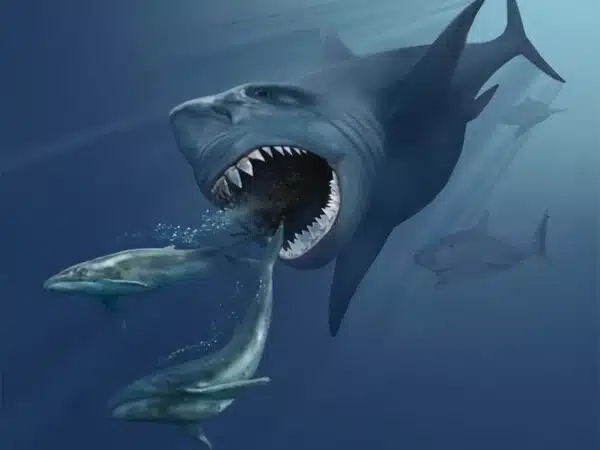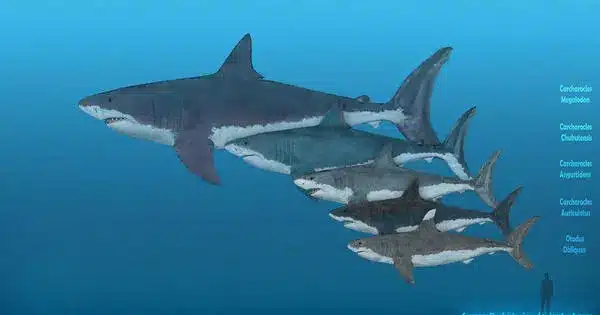A new study reveals that the Megalodon, a massive shark that went extinct 3.6 million years ago, was more thin than previous research showed. This discovery alters scientists’ understanding of Megalodon behavior, ancient ocean ecology, and the reasons sharks went extinct.
In popular culture, the Megalodon or megatooth shark is generally represented as a super-sized monster, with contemporary examples including the sci-fi movie “The Meg” (2018) and “Meg 2: The Trench” (2023). Previous research suggests that the shark reached lengths of at least 50 feet and potentially up to 65 feet.
However, the Megalodon is mostly known for its teeth and vertebrae in the fossil record, which is a relatively inadequate set of evidence from which to draw conclusions. Previous research has used the present great white shark as a model for Megalodon bodies. Based on this model, experts concluded that the shark was spherical and stocky, similar to great whites.
Our team reexamined the fossil record, and discovered the Megalodon was more slender and possibly even longer than we thought. Therefore, a better model might be the modern mako shark.
Phillip Sternes
“Our team reexamined the fossil record, and discovered the Megalodon was more slender and possibly even longer than we thought. Therefore, a better model might be the modern mako shark,” said UCR biologist and paper first author Phillip Sternes. “It still would have been a formidable predator at the top of the ancient marine food chain, but it would have behaved differently based on this new understanding of its body.”
A team of 26 scientists from around the world, lead by Sternes and DePaul University paleobiology professor Kenshu Shimada, was motivated to conduct the new study, which was published in the journal Palaeontologia Electronica.
“It was a ‘eureka-moment’ when our research team realized the discrepancy between two previously published lengths for the same Megalodon specimen,” Shimada stated in a press release.
The researchers next discussed a fresh comparison of Megalodon vertebra fossils to those of contemporary lamniform shark relatives. “We measured the whole vertebral skeleton of a living great white shark with a CT scanner and compared that to the previous reconstruction of the Megalodon vertebral column,” Sternes went on to say.

“It was still a giant, predatory shark. But the results strongly suggest that the Megalodon was not merely a larger version of the modern great white shark.”
A revised understanding of the Megalodon body type would in turn affect scientists’ understanding not only of the giant shark itself, but also of its impact on the ecology and evolution of marine ecosystems that shaped the present-day oceans.
There is no doubt the Megalodon is one of the largest marine predators ever to have lived. But a slimmer and more elongated body would suggest the Megalodon also had a longer digestive canal. Sternes explained that in this case, the sharks might have enjoyed enhanced absorption of nutrients, and may not have had to eat as often as previously believed.
“With increased ability to digest its food, it could have gone for longer without needing to hunt. This means less predation pressure on other marine creatures,” Sternes said. “If I only have to eat one whale every so often, whale populations would remain more stable over time.”
Some shark scientists have theorized that a natural decrease in prey led to the extinction of Megalodons. However, Sternes has another theory, in part supported by the revised understanding of its shape.
“I believe there were a combination of factors that led to the extinction, but one of them may have been the emergence of the great white shark, which was possibly more agile, making it an even better predator than the Megalodon,” said Sternes. “That competition for food may have been a major factor in its demise.”
The scientific team of shark experts from the United States, United Kingdom, Austria, France, Japan, Mexico, Brazil, and Australia all believe that a better understanding of ancient marine life will have a cascading influence on the waters that are still evident today.
“Now that we know it was a thinner shark, we need to reinvestigate its lifestyle, how it really lived, and what caused it to die,” Sternes went on to say. “This study represents a major stepping stone for others to follow up on.”














